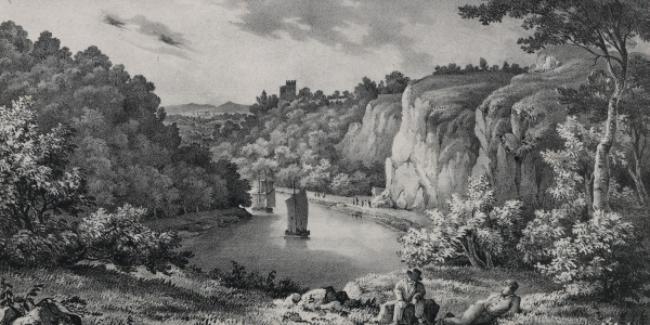Romanticism and the South West conference

A conference which re-assessed the importance of the South West in Romantic thought and writing.
- Date: 29 June, 2015
- Venue: Goldney Hall, Clifton (BS8 1BH)
- Plenary speakers: Professor Nick Groom (Exeter) and Tim Dee
The conference organisers mapped out Bristol's rich and varied literary history. Would you like to follow the trail? Click on the following link and select the following layer: 'Bristol's 'Romantic Era'.
Conference overview
The conference aimed to explore the importance of the South West for Romantic writers, with a particular emphasis on the following topics:
- Ecologically aware writing and protoenvironmental thought;
- The role of the South West in an era of scientific development and discovery;
- The South West as a centre for reform movements and radical politics, as well as a region connected to slavery and imperialism;
- Romantic afterlives in the South West.
Background
Drawing together different perspectives of the region, the conference aims to reconsider the complex role of the South West in the development of Romantic history and literature.
The South West is home to some of British Romanticism’s major texts. Shelley’s Queen Mab (1813) was written in Lynmouth, Devon; Wordsworth and Coleridge wrote the Lyrical Ballads (1798) during their temporary residence in the Quantocks; and Thomas Chatterton’s poetry is full of the spirit of the West Country. The bookseller Joseph Cottle – acquaintance of Coleridge and Robert Southey – published some of Romanticism’s key texts and periodicals from his Bristol bookshop, less than a mile from where Chatterton was born, and less than forty miles from Nether Stowey, the birthplace of the Lyrical Ballads.
The South West is sometimes no more than a tableau for Romantic writers, a wild region of myth and mystery, exciting because so different from the urbanity of London. But for other writers the region is essential to their writing, less a concept than an active element in how they thought and wrote. Thomas Chatterton’s poems are full of the flowers, birds, and regional peculiarities of the South West; Coleridge’s 1795 lectures, delivered in Bristol, are partly indebted to the culture of radical dissent and nonconformism he encountered in the city; and Dorothy Wordsworth’s Alfoxden Journal, begun in 1798, is full of admiring descriptions of Somerset, written in exact yet highly imaginative prose.
Although Romanticism and the South West are the conference’s main coordinates, we also invite papers that interpret the theme in much more general terms. The South West’s prehistory, for instance, fascinated Wordsworth, who wrote movingly about Stonehenge, just as, in the twentieth century, the Quantocks continued to fascinate poets such as Edward Thomas, who, in his In Pursuit of Spring, described a highly symbolic journey from London to Nether Stowey. For Wordsworth and Thomas, as for so many other writers, the South West held a special place in the national imagination and in British writing.
